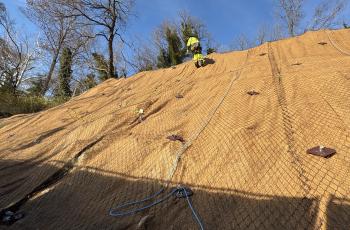EPA's chemicals management program addresses pollution prevention, risk assessment and risk management for existing chemical substances in commercial use. As part of this management strategy, the EPA has identified 83 chemicals for further assessment under a Toxic Substances Control Act Work Plan. Chemicals in this work plan include mercury and other metals, cyanide, and numerous organic compounds. In addition to these chemicals, historically used chemicals such as Polychlorinated Biphenyls are a concern due to their presence and persistence in the environment. There are also many other chemicals of emerging concern that are being evaluated for environmental impacts, including pharmaceuticals and personal care products, flame retardants, nanomaterials, perfluorinated chemicals (PFCs) and others. In general, DC Water promotes the reduction of these chemicals in the waste stream through source reduction and product substitution.
Mercury
Mercury is a naturally occurring element that is found in air, water, and soil. It exists in several forms:
- elemental or metallic mercury,
- inorganic mercury compounds,
- and organic mercury compounds.
Although mercury can change its form in the environment, it is persistent and not biodegradable. It bioaccumulates as it moves up the food chain and is very toxic in the organic form. Mercury in the air can settle into the water or onto the land, where it can be washed into the waterways or sewer system. Because mercury is persistent, historical contamination from past industrial discharges of mercury is of concern. Mercury can accumulate in sewer pipes, leading to long-term releases of mercury to the wastewater treatment plant, even after the original source has been eliminated.
Mercury is present in many consumer products. Products that contain mercury should be replaced with products that do not contain mercury, whenever possible. Some examples of products that may contain mercury include the following:
- Thermometers
- Thermostats
- Fluorescent and other lamps
- Manometers and barometers
- Switches and relays
- Button-cell batteries
- Dental amalgam
- Chemicals and formulated products, including laboratory chemicals such as Zenker's solution, B5 solution, and products using thimerosal as a preservative
To dispose of these products, contact a reputable recycler or hazardous waste contractor. Residents in the District of Columbia may dispose of mercury and mercury-containing items during scheduled household hazardous waste collection days. To prevent mercury from entering waterways, never dispose of these products in the regular solid waste trash or the sewer system.
Polychlorinated Biphenyls (PCBs)
PCBs are a class of man-made compounds that were manufactured from 1929 until their ban in 1979. They were used in hundreds of industrial and commercial applications due to their non-flammability, chemical stability, high boiling point, and electrical insulating properties. PCBs do not readily break down and may remain for long periods of time cycling between air, water, and soil. In addition to being persistent, PCBs also bioaccumulate in organisms as it moves up the food chain and has been demonstrated to cause cancer, as well as other adverse human health effects. Portions of the tidal Potomac River are listed by the District of Columbia, Maryland, and Virginia as impaired waterways due to PCB contamination in fish.
Products containing PCBs should be replaced with new products. PCBs may be present in products and materials produced before the 1979 ban. Examples of these products include the following:
- Transformers and capacitors
- Other electrical equipment including voltage regulators, switches, reclosers, bushings, and electromagnets
- Oil used in motors and hydraulic systems
- Old electrical devices or appliances containing PCB capacitors
- Fluorescent light ballasts
- Cable insulation
- Thermal insulation material including fiberglass, felt, foam, and cork
- Adhesives and tapes
- Oil-based paint
- Caulking
- Plastics
PCBs were manufactured and sold under a variety of trade names, the most common being Aroclor. For a complete list of trade names, see the EPA PCB web site.
To dispose of these products, contact a reputable hazardous waste contractor. Residents in the District of Columbia may dispose of PCB-containing items during scheduled household hazardous waste collection days. To prevent PCBs from entering waterways, never dispose of these products in the regular solid waste trash or the sewer system.



